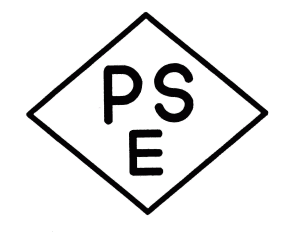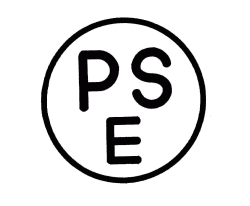See below a summary of safety standards related to the use of our products.
1.Overview
A safety standard is established by a country or an organisation representing it to protect general users from electrical shock and fire hazards.
For electical equipment manufacturers, uzilising switches that have been safety-approved ensures the safety of the switch and simplifies, at least in part, the process of obtaining certification by safety testing.
2.Main approval and certification schemes
2.1 Product Safety Electrical Appliance & Material Law (PSE) (Japan)


The most recent version of the Product Safety Electrical Appliance & Material law came into force in April 2001.
Electrical appliances and materials are classified as 'specified electrical appliances and materials' (formerly Class A electrical appliances and materials) and 'electrical appliances and materials other than specified electrical appliances and materials' (formerly Class B electrical appliances and materials), and for specified electrical appliances and materials, it is obligatory to undergo a conformity inspection at an authorised inspection body and preserve the certificate. Penalties have also been strengthened.
⬛Regarding Switches
According to the notification of 1 June 1995 (Interpretation of the scope of electrical appliances), it is not possible to obtain a conformity inspection certificate for an electrical appliance by itself for a switch that is not covered by the directive.
If a conformity inspection certificate is required for a device manufactured by the customer, it must be obtained as a device including various components, even if it is not easy to do so. The switch is also inspected during the conformity test of the electrical appliance, and must therefore satisfy the technical standards for electrical appliances.
All our switches (electrical appliance compliant products) are exempt.
Please contact our sales office if you require any information on switches before applying. The main conditions for the exclusion of electrical appliances and materials are as follows (1) to (2).
(1) Items other than SPST, SPDT and DPST.
(2) Those with solder terminals, fastening terminals, wrapping terminals and terminals for printed circuit boards.
2.2 UL (USA)
 UNDERWRITERS' LABORATORIES INC.
UNDERWRITERS' LABORATORIES INC.

UL (UNDERWRITERS' LABORATORIES INC.) is a privately-owned approval body in the United States. Its purpose is to ensure consumer safety and prevent fires, establish safety standards, conduct tests based on those standards, and publish the results to relevant organisations and the general public.
Accordingly, products that have passed UL's tests (UL Listed Products) are authorised to display the Recognised Component Mark and are regarded as products of particularly stable quality in the US and European markets.
Only products that have been inspected and passed by UL's appointed testers are shipped as UL-approved products.
Products that do not bear the Recognised Component Mark are not recognised as UL Listed products, even if they are UL Listed.
2.3 CSA (Canada)
 CANADIAN STANDARDS ASSOCIATION
CANADIAN STANDARDS ASSOCIATION

CSA (CANADIAN STANDARDS ASSOCIATION) is a national approval body in Canada that establishes safety standards and conducts tests based on these standards for the purpose of human safety and fire prevention for electrical appliances and other equipment.
Products that have passed the CSA tests (CSA-standardised products) are authorised to display the CSA Mark, and it is mandatory in Canada to use products bearing the CSA Mark.
Products without the CSA Mark are not recognised as CSA Standard Products, even if they are CSA Listed Products.
2.4 VDE (Germany)
 VERBAND DEUTSCHER ELECTOROTECHNIKER
VERBAND DEUTSCHER ELECTOROTECHNIKER

The VDE (VERBAND DEUTSCHER ELECTOROTECHNIKER) is the approval authority in Germany for the prevention of danger to human life and fire during all uses of electricity.
Approval is non-compulsory, but is effectively mandatory, as there are penalties for accidents caused by unapproved products.
Certified products are labelled with the mark.
